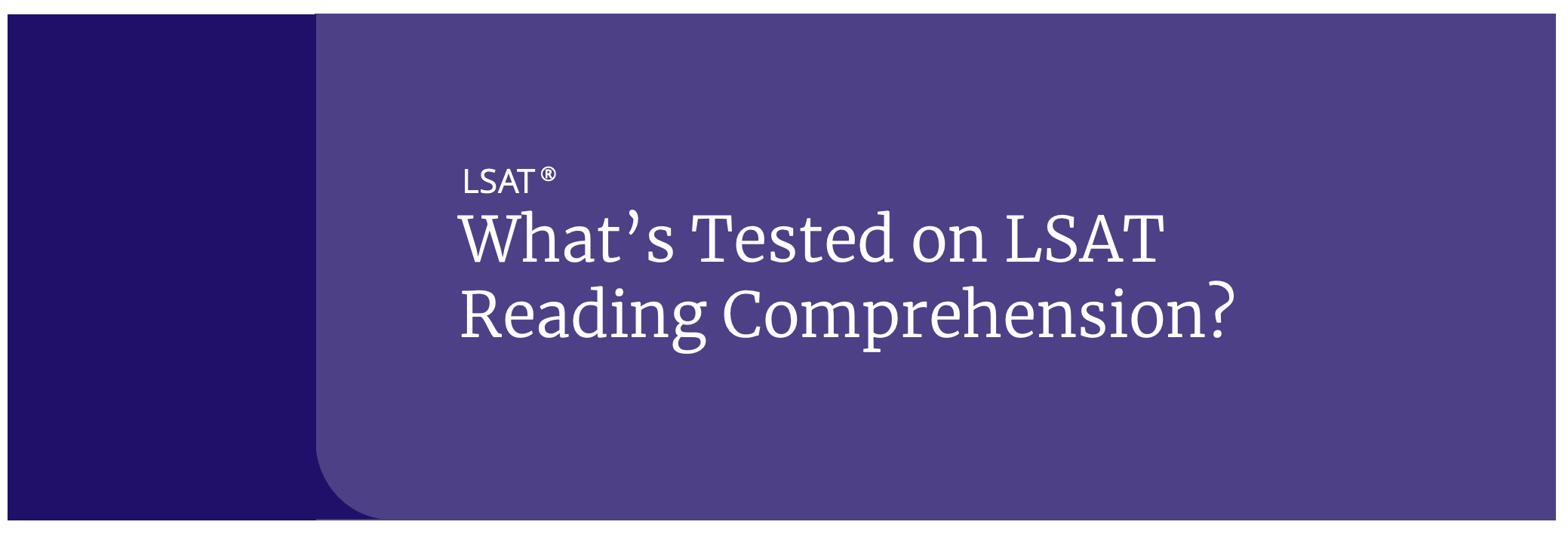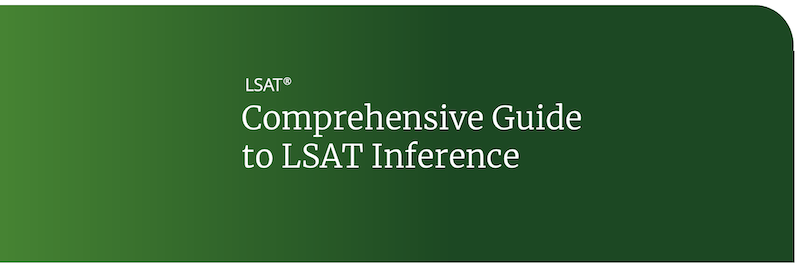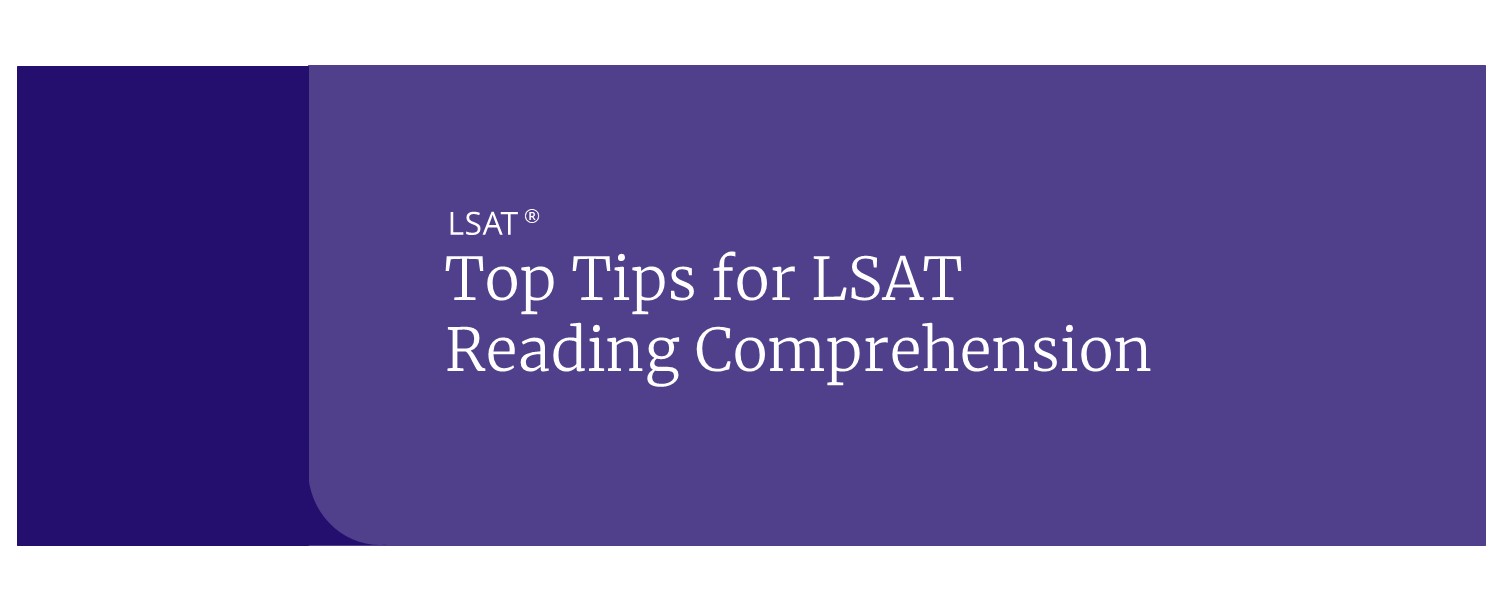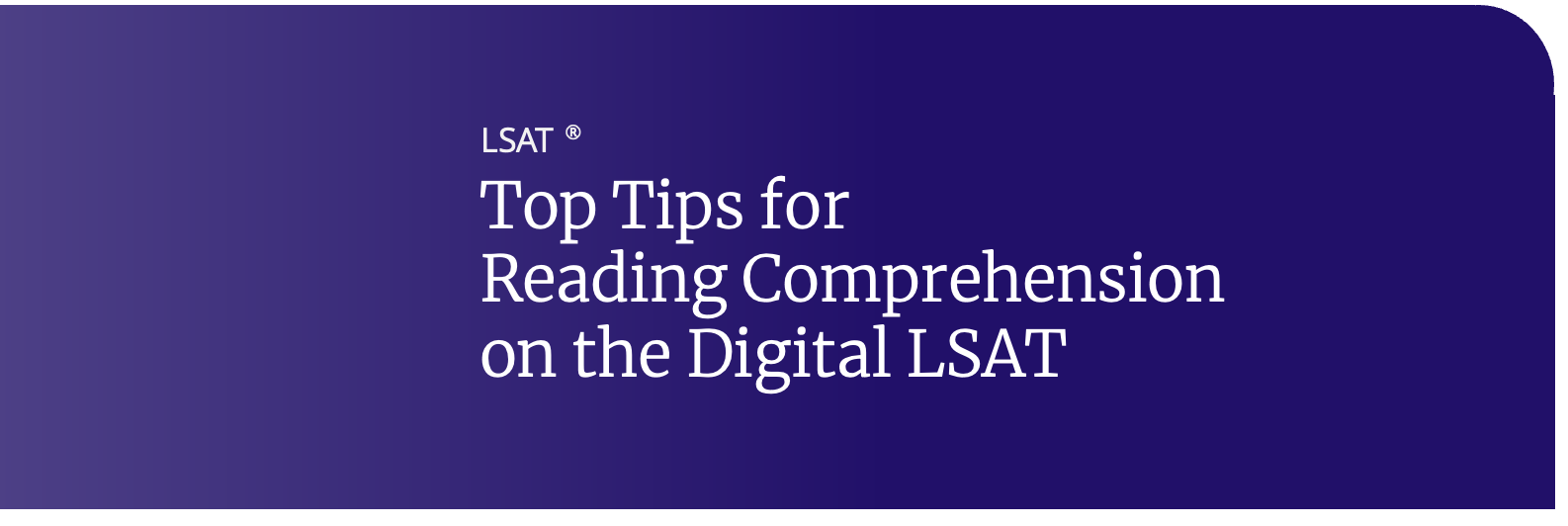What's Tested On the LSAT: Reading Comprehension
While there are many ways to improve your LSAT Reading Comprehension score, here are a few strategies that will get you started on the right track to acing the LSAT Reading Comprehension section.
LSAT Reading Timing Techniques
To finish all four passages in the allotted 35 minutes, along with saving some time at the end to go back and review your answers, you should be completing each passage in 8 minutes. Four passages at eight minutes each total 32 minutes, leaving you three minutes to check over your answers. While it may seem daunting to finish a passage in that short of a time period, if you manage your time wisely you can do it. As a first step, try to read and annotate the passage in 3 ½ minutes or less.
LSAT Passage Prioritization
You are under no obligation to tackle the passages in the order in which they are presented. At the very beginning of the Reading Comprehension section, take a quick glance at each of the four passages and decide the order in which you are going to read them. Your goal is to start with the easy passages and end with what you feel are the harder passages.
Prioritizing passages is mainly a question of personal preference, but most experts prefer passages that appear to have, at a glance, clear organization, strong opinions, and/or simple prose. Familiarity with a passage’s topic can also be beneficial, but remember that all of the questions can and must be answered just from the information in the passage itself. Students who have a great deal of knowledge about a passage’s topic have to be careful not to use outside knowledge when answering the questions.
Through practice, you will discover what types of passages are inherently easier for you than others. For example, some students find the comparative reading paired passages easier than the other passages, so they prefer to do those first. Others find comparative reading more difficult and tend to leave that for last.
LSAT Question Prioritization
It’s important to keep in mind that you do not need to answer every question correctly to get a great score. Within each RC passage’s question set, some questions will be easier to answer than others. There is no bonus for answering the hardest question(s) in the section. Some questions will be much more time-consuming than others. Your goal is to take control of how much time and effort you dedicate to any particular question. Be willing to skip one or two difficult or very time-consuming questions if doing so will allow you to get more questions correct on the same passage or subsequent passages.
A passage’s Global question is usually the first in the set and should typically be answered while the Topic/Scope/Purpose/Main Idea summaries are fresh in your mind. Global questions are broad and ask about the passage as a whole. For example, they might ask for the passage’s Main Idea. Some passages have two Global questions, with the second one usually appearing near the end of the question set. Look for it so that you can answer it with a nearly identical prediction.
After Globals, tackle the questions that have clear research clues in their question stems. These will guide you back to specific details in the passage. For example, “The author mentions…in paragraph 1 in order to.” Research the referenced details in context. Notice nearby keywords that indicate the author’s purpose or opinion.
Open-ended questions (e.g., “The passage supports each of the following EXCEPT”) can be time-consuming. Be as strategic as possible with them by eliminating answer choices that conflict with the author’s point of view or fall clearly outside the scope of the passage.
Toughest LSAT Questions Quiz
Try to answer five of the most challenging LSAT questions.
FREE PREMIUM CONTENT
Toughest LSAT Questions Quiz
Unlock the answers and explanations to all questions from our hardest LSAT questions quiz.
LSAT Reading Comprehension Question Overview
| Question Type | Identify | Task |
|---|---|---|
| Global | “main point” “primary purpose” “organization” “title” | Think big picture. Review T/S/P/MI. Consult your roadmap. |
| Detail | “according to” “passage states” “author mentions” | Research the relevant text. Correct answers will be a very close paraphrase of something stated in the passage. |
| Inference | “author implied” “passage suggests” “inferred” “likely to agree with” “author’s attitude” | Research if possible. Correct answer will follow from the passage but will probably not be a close paraphrase. |
| Logic Function | “function” “primarily in order to” “for the purpose of” | Research the relevant text. Look at the context to determine why the author included the referenced detail. |
| Logical Reasoning | “supports” “undermines” “principle” “analogous” | Use appropriate Logical Reasoning strategy. |
LSAT Reading Comprehension Question Types and Strategies
Triaging: for 30-60 seconds at the beginning of any RC section, you should be choosing your passage order. If you are not doing this, you are doing yourself no favors. The LSAT does not necessarily put things in the most helpful order for us, so do it ourselves. Some factors to consider: paragraph length, sentence length, keywords, author point of view/opinion, subject matter or complexity, number of questions, types of questions. Don’t automatically assume that natural science passages, for instance, are always harder–any of the four types can be the toughest one.
Most students attack global question first, then move to whatever questions have specific line references. Don’t be afraid to skip around. Save vaguely worded inference questions without any context clues (like “which of the following is most likely to be true according to the passage?”) and hypothetical/analogy inference questions (in which you have to refer to situations similar to the passage, but not the exact situation mentioned) for the end.
The passage will be in one of four categories: natural science, social science, humanities or law. One passage will be comparative reading, which means two shorter passages that agree on some points and disagree on others. Remember, don’t get lost in details! Big picture and overall structure are more important.
[ PREVIOUS: Logical Reasoning: Strengthen and Weaken Questions ]
[ NEXT: 5 Tips for Reading Comprehension ]




